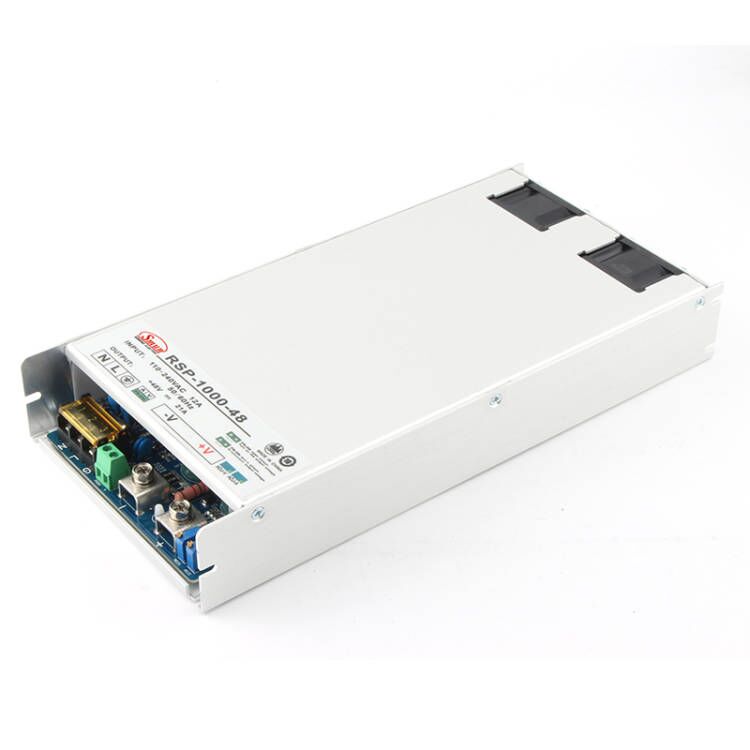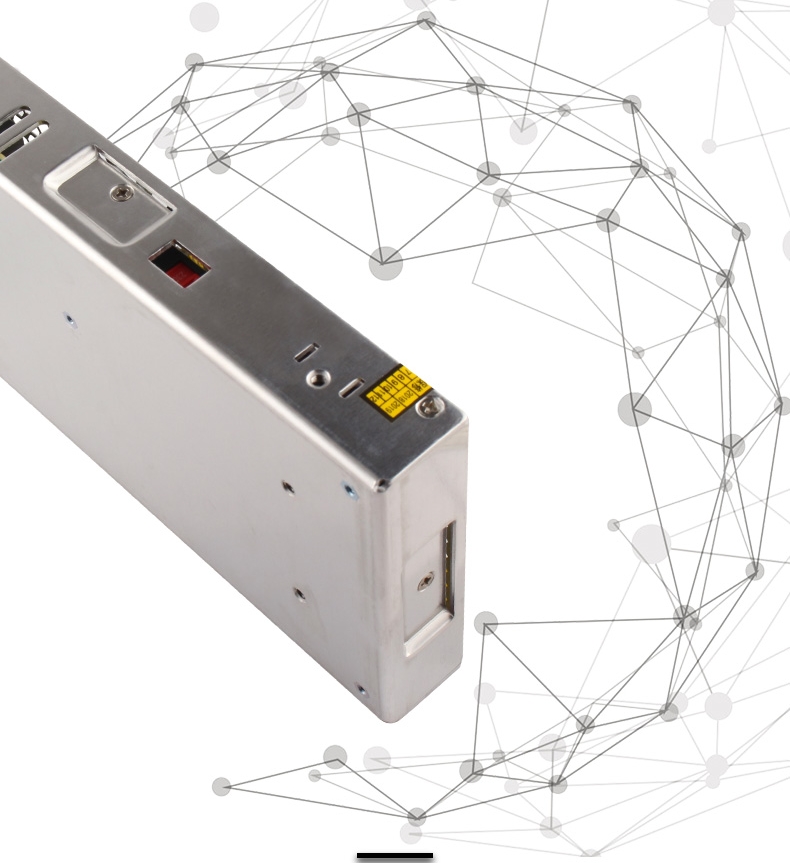Are you wondering how your LED lights stay bright and efficient? The secret lies in the LED driver.
LED drivers play a crucial role in regulating the power needed for LEDs. Without them, your lights might flicker, overheat, or even burn out.
In this post, we'll explore what LED drivers do, why they're essential, and how they ensure your lights function optimally.

Understanding LED Drivers: The Basics
What is an LED Driver?
An LED driver is an essential component in LED lighting systems. It controls the power supply to the LED, ensuring it operates efficiently and safely.
LEDs need a specific amount of voltage and current to function properly. An LED driver helps by converting the power from the main supply into a form that’s usable for LEDs. In most cases, the power from the wall outlet is AC (alternating current), while LEDs run on DC (direct current).
LED drivers convert this AC power into DC. This step is crucial for the proper functioning of LEDs, as they can't operate on AC power directly. Without this conversion, LEDs would be damaged or fail to light up.
Why Are LED Drivers Necessary?
LEDs are sensitive to changes in voltage and current. If the voltage or current is too high or too low, the LED can be damaged, leading to poor performance or early failure.
A good LED driver ensures a constant supply of the right voltage and current. It protects the LEDs from fluctuations in the power supply that could otherwise overheat or burn them out.
In addition to maintaining performance, LED drivers extend the lifespan of LEDs by providing steady power, preventing overheating, and protecting against electrical surges.

How Does an LED Driver Work?
The Function of an LED Driver
An LED driver is responsible for providing the right power to the LED. It ensures that the LED gets a consistent supply of electricity, maintaining stable brightness.
LED drivers regulate the current flowing into the LED to prevent overcurrent, which could damage the light. Overheating is also avoided through this control. Without regulation, LEDs would burn out quickly, or their light output would become inconsistent.
They also contribute to energy efficiency. By maintaining steady current and voltage, LED drivers help extend the lifespan of the LEDs, reducing the need for replacements and saving energy over time.
LED drivers come in two main types: constant current and constant voltage. Constant current drivers maintain a fixed current, adjusting voltage as needed, while constant voltage drivers supply a steady voltage and allow the current to vary.
The Conversion Process: AC to DC
LEDs need direct current (DC) to operate, but most power supplies, like the electricity in your home, provide alternating current (AC).
An LED driver solves this issue by converting AC into DC. This conversion is vital because LEDs will not work with AC power directly. Without this step, the LED could burn out or fail to produce light.
By ensuring the proper current and voltage, the driver protects the LEDs and helps them work efficiently.
Different Types of LED Drivers
Constant Current LED Drivers
Constant current LED drivers are designed to maintain a fixed current, adjusting the voltage as needed. These drivers are ideal for high-power LEDs, where the current needs to stay steady to ensure consistent light output.
These drivers are commonly used in applications such as streetlights, high-intensity lighting, and large LED arrays. When you need a steady current for your LEDs, constant current drivers are the best option.
Constant Voltage LED Drivers
Constant voltage LED drivers supply a fixed voltage and let the current adjust based on the load. These drivers are perfect for LED systems that require a stable voltage.
LED strips are a typical example of systems that use constant voltage drivers. They work well in decorative lighting or any setup where the voltage needs to remain constant while the current can vary.
Low Voltage vs High Voltage LED Drivers
LED drivers come in both low voltage and high voltage models. Low voltage drivers typically use DC input between 5V and 36V. They are more efficient and often used in smaller lighting applications.
On the other hand, high voltage drivers use AC input (90VAC to 277VAC). These drivers are better suited for large-scale projects like commercial lighting or streetlights. They deliver more current to power multiple LEDs but use more wattage.
Choosing between the two depends on the needs of your project. Low voltage drivers are ideal for energy-efficient, small-scale installations, while high voltage drivers are best for larger, commercial or industrial settings.

Key Factors to Consider When Choosing an LED Driver
Power and Voltage Requirements
When selecting an LED driver, it's essential to match the driver’s voltage and power to your LEDs’ needs. Different LEDs require different voltage levels, so knowing your LED's specifications is crucial.
Check the voltage and current ratings of your LEDs and select a driver that provides the correct amount of power. This ensures the LEDs perform efficiently and last longer.
Dimming Capability
Dimming features are important for applications where you need to adjust the light levels. If you want your lighting to be dimmable, you’ll need a driver that supports dimming.
There are two main types: dimmable and non-dimmable drivers. Dimmable drivers are compatible with various dimming systems, like TRIAC or 0-10V. Choosing the right dimming system can significantly impact the performance and flexibility of your lighting.
Efficiency and Energy Consumption
Energy efficiency is a key factor in selecting an LED driver. A higher power factor (PF) means more efficient energy use, which can lower electricity costs and reduce waste.
Look for drivers with a high PF rating. This ensures that your LED lighting operates at peak efficiency, saving both energy and money in the long term.
Size and Form Factor
The size and shape of the LED driver matter, especially when space is limited. Make sure the driver fits the installation space, whether in tight enclosures or open spaces.
Different LED applications require different form factors. For example, compact drivers are ideal for small fixtures, while larger drivers are needed for high-power installations like streetlights or commercial lighting systems.
LED Driver Features You Should Know About
Dimmable LED Drivers
Dimmable LED drivers allow you to adjust the brightness of your lights, offering greater control over your lighting environment. This feature is especially useful in spaces where lighting levels need to be changed frequently, like living rooms or restaurants.
Dimming not only enhances the ambiance but also helps save energy. By lowering the brightness, you use less power, which can reduce electricity bills over time. Plus, dimming helps extend the lifespan of your LEDs.
Ingress Protection (IP) Rating
When choosing an LED driver, it's important to consider its Ingress Protection (IP) rating, especially for outdoor or damp environments. The IP rating indicates how well the driver is protected against dust, moisture, and other environmental factors.
For outdoor use, select a driver with a high IP rating (e.g., IP65 or higher) to protect against weather conditions. For indoor applications, a lower rating (e.g., IP20) is usually sufficient.
Emergency LED Drivers
Emergency LED drivers play a critical role in providing backup lighting during power outages. They help ensure safety by keeping essential lights running when the main power supply is unavailable.
These drivers are designed to automatically switch to battery power when the electricity goes out. Emergency drivers also help businesses comply with safety codes, which require specific lighting levels during emergencies.
Common LED Driver Problems and Solutions
Flickering Lights
Flickering lights can be caused by several issues, such as a faulty driver, poor connections, or incompatible dimming systems. If your LEDs flicker, the driver might not be supplying a consistent current or voltage.
To fix this, check the driver for compatibility with your LED setup. If the issue persists, replacing the driver or adjusting the wiring can help stabilize the lighting.
Overheating Issues
Overheating is a common problem, especially when the driver is underpowered for the LEDs it’s driving. When the current exceeds the recommended level or if the driver lacks proper ventilation, it can overheat and damage both the driver and LEDs.
To prevent overheating, ensure proper airflow around the driver and consider using a higher wattage driver if necessary. Also, check for adequate cooling systems or heat sinks to dissipate heat effectively.
Reduced Lifespan of LEDs
Using an incorrect driver can shorten the lifespan of your LEDs. If the voltage or current is too high, the LED can burn out quickly. Similarly, if the driver isn't powerful enough, it could strain the LED and lead to early failure.
To ensure long-term performance, select a driver that matches your LED’s specifications. This ensures optimal performance and longevity, reducing the need for frequent replacements.
How to Choose the Right LED Driver for Your Project
Step-by-Step Guide to Selecting an LED Driver
Check LED Specifications
Before choosing a driver, you must know the specifications of your LEDs, such as voltage, current, and power. This ensures that the driver will meet your LED's needs.
Determine the Type of Driver Needed
Next, decide whether you need a constant current or constant voltage driver. If your LED requires a steady current, choose a constant current driver. If it needs a stable voltage, go for a constant voltage driver.
Consider Additional Features
Think about whether you need extra features, such as dimming capabilities, an IP rating for protection against dust and moisture, or emergency backup power for safety during outages.
Choosing Between Dimmable and Non-Dimmable Drivers
Dimmable drivers allow you to adjust the brightness of your LED lights. If you need flexible lighting control, like for a living room or restaurant, choose a dimmable driver. On the other hand, if consistent brightness is all you need, a non-dimmable driver will work just fine and is often cheaper.
Matching Driver Power to LED Power
To choose the right driver, calculate the total power required by your LEDs. Multiply the voltage by the current to find the wattage.
It’s also important to consider efficiency. A good practice is to add a buffer (about 20%) to the total power requirement. This ensures the driver can handle any additional power demands without overloading.
Conclusion
Choosing the right LED driver is crucial for optimal lighting performance. It ensures efficiency and prevents damage to your LEDs.
To extend your LEDs' lifespan, always match the driver to their specifications.
Consider your needs—whether dimming, efficiency, or special features—and select the driver that best fits your project. This guarantees long-lasting, reliable performance.
FAQs About LED Drivers
Q: Do I need an LED driver for all LED lights?
A: Yes, LED lights require a driver to regulate power, ensuring proper function and safety. Without one, LEDs could overheat, flicker, or fail prematurely.
Q: Can I use any LED driver for my LED lights?
A: No, it’s essential to match the driver to your LED's voltage and current requirements. Using the wrong driver can damage the LEDs or cause inefficiency.
Q: How long do LED drivers last?
A: LED drivers typically last between 30,000 and 50,000 hours, depending on factors like usage and environmental conditions.
Q: Can I dim any LED light?
A: Not all LEDs are dimmable. You need a compatible dimmable driver and LED lights that support dimming for this feature to work.












